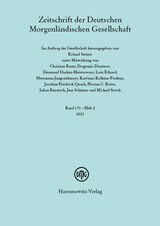Autor: Stephen G. Haw
- «
- 1
- »
Die Suche erzielte 6 Treffer.
Yuan Administrative Units in Marco Polo’s Description of the World frontmatter
The Orthography of Marco Polo's Toponyms research-article
Marco Polo in “Mangi”: Kuizhou, Fuling, Houguan, and the Pontoon Bridge at Fuzhou research-article
The Overview of the Unified Territories of the Great Yuan and Marco Polo's Account of the Empire of Qubilai Qa'an research-article
Śrīvijaya, Java, and the Sunda Strait During the Fifth to Tenth Centuries research-article
- «
- 1
- »
